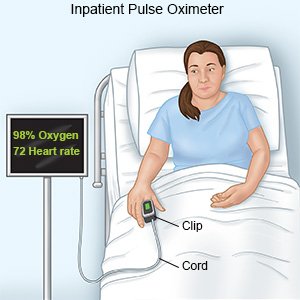Gunshot Wound to a Limb
Medically reviewed by Drugs.com. Last updated on Apr 6, 2025.
A GSW to the limb may cause damage to your bones, tendons, or ligaments. It may also cause damage to your muscles, nerves, or major blood vessels.
WHILE YOU ARE HERE:
Informed consent
is a legal document that explains the tests, treatments, or procedures that you may need. Informed consent means you understand what will be done and can make decisions about what you want. You give your permission when you sign the consent form. You can have someone sign this form for you if you are not able to sign it. You have the right to understand your medical care in words you know. Before you sign the consent form, understand the risks and benefits of what will be done. Make sure all your questions are answered.
Monitoring:
- Telemetry is continuous monitoring of your heart rhythm. Sticky pads placed on your skin connect to an EKG machine that records your heart rhythm.
- Pulse oximetry is a device that measures the amount of oxygen in your blood. A cord with a clip or sticky strip is placed on your finger, ear, or toe. The other end of the cord is hooked to a machine. Never turn the pulse oximeter or alarm off. An alarm will sound if your oxygen level is low or cannot be read.

- Intake and output may be measured. Healthcare providers will keep track of the amount of liquid you are getting. They also may need to know how much you are urinating. Ask healthcare providers if they need to measure or collect your urine.
- Neurovascular checks may show damage to your blood vessels or nerves. A neurovascular check may show your healthcare provider how well your blood is moving through your arm or leg. He or she will check your pulses, skin temperature, and skin color of your limbs. He or she will also check your hand grasps and foot movements. Your healthcare provider may do neurovascular checks every hour.
Medicines:
- Antibiotics may be given to help treat or prevent an infection caused by bacteria.
- Pain medicine may be given. Do not wait until the pain is severe before you ask for more medicine.
- A tetanus shot may be given. Tetanus is a severe infection caused by bacteria. Tell your healthcare provider if you have had the tetanus vaccine or a tetanus booster within the last 5 years.
- You may need extra oxygen if your blood oxygen level is lower than it should be. You may get oxygen through a mask placed over your nose and mouth or through small tubes placed in your nostrils. Ask your healthcare provider before you take off the mask or oxygen tubing.
Tests:
- Blood and urine tests may be done to monitor your condition.
- A Doppler ultrasound may be done to check blood flow in your arm or leg. Blood flow may be decreased from a GSW.
- Pressure measurement checks the pressure in the limb that has been injured. This may be done to check for compartment syndrome. Compartment syndrome is a painful condition caused by pressure in a body area. Nerves and muscles may be permanently damaged because blood cannot flow to the area.
Treatment:
- A blood transfusion may be needed if you bleed heavily from your GSW.
- IV fluids may be given to prevent dehydration and increase circulation to major organs.
- Traction may be needed if your broken bones are displaced from a GSW. Traction pulls on the bones to put them back into place. A pin may be put in your bone or cast and hooked to the traction device. Weights are hung from the traction device to help pull the bones into the right position.
- Surgery may be needed to repair damage to organs or blood vessels. It may also be needed to clean your GSW or remove the bullet. Your healthcare provider can close your GSW with stitches or staples. Your GSW may need to be left open to allow swelling to decrease and tissues to heal.
- A ventilator is a machine that gives you oxygen and breathes for you when you cannot breathe well on your own. An endotracheal (ET) tube is put into your mouth or nose and attached to the ventilator. You may need a trach if an ET tube cannot be placed. A trach is a tube put through an incision and into your windpipe.
RISKS:
Your arm or leg may need to be amputated. You may bleed heavily from the wound or develop an infection. Lead from the bullet may cause damage. You may also lose the ability to use your arm or leg. Compartment syndrome may develop. Compartment syndrome is a painful condition caused by pressure in a body area. Nerves and muscles may be permanently damaged because blood cannot flow to the area.
CARE AGREEMENT:
You have the right to help plan your care. Learn about your health condition and how it may be treated. Discuss treatment options with your healthcare providers to decide what care you want to receive. You always have the right to refuse treatment.© Copyright Merative 2025 Information is for End User's use only and may not be sold, redistributed or otherwise used for commercial purposes.
The above information is an educational aid only. It is not intended as medical advice for individual conditions or treatments. Talk to your doctor, nurse or pharmacist before following any medical regimen to see if it is safe and effective for you.
Learn more about Gunshot Wound to a Limb
Care guides
Further information
Always consult your healthcare provider to ensure the information displayed on this page applies to your personal circumstances.
